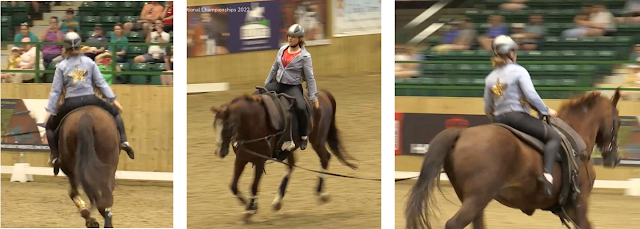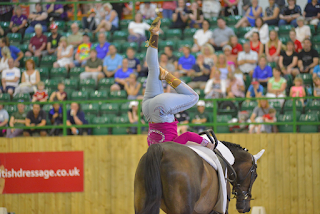Perfection is hard to attain...all of the photos shown on this page (and indeed the whole site) are of para vaulters. They don't necessarily show something that would be scored a 10/10, but they show real disabled vaulters in competition and training. For good measure, there are also diagrams from the FEI which, at least in the case of compulsories, demonstrate something a bit closer to perfection!
Pre-Novice Compulsories (for all RDA competitions under current rules, and for all Pre-Novice competitions under BEV rules)
Basic seat - bench - leg lifts (sometimes these are referred to as 'leg swings', but 'lifts' is a more accurate description of the motion required.)
 |
| Bench |
Basic seat
Bench
Leg lifts
Ideas for freestyle moves (many more are available from the FEI Code of Points)
Remember that most moves can be adapted by changing the position on the horse (e.g. moving to the croup instead of the back) or by facing in a different direction (e.g. sideways instead of forwards). Bear in mind, too, that not all horses will tolerate all moves. For example, a horse who is head shy may not enjoy people doing a flare leg on the neck, facing backwards, because they may not like having the vaulter's foot so close to their head.
















































No comments:
Post a Comment